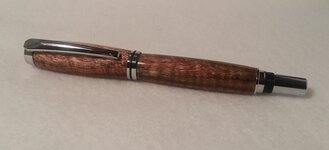mike4066
Member
I was doing a CA finish last night that went bad and want to "do it over". I plan use a skew and (carefully) sand it back down to the wood. Any thickness lost could be rebuilt with CA (ironic...).
Is there a better way to do this? I was worried that acetone would gum up the glue and get into the grain of the blank.
Is there a better way to do this? I was worried that acetone would gum up the glue and get into the grain of the blank.

